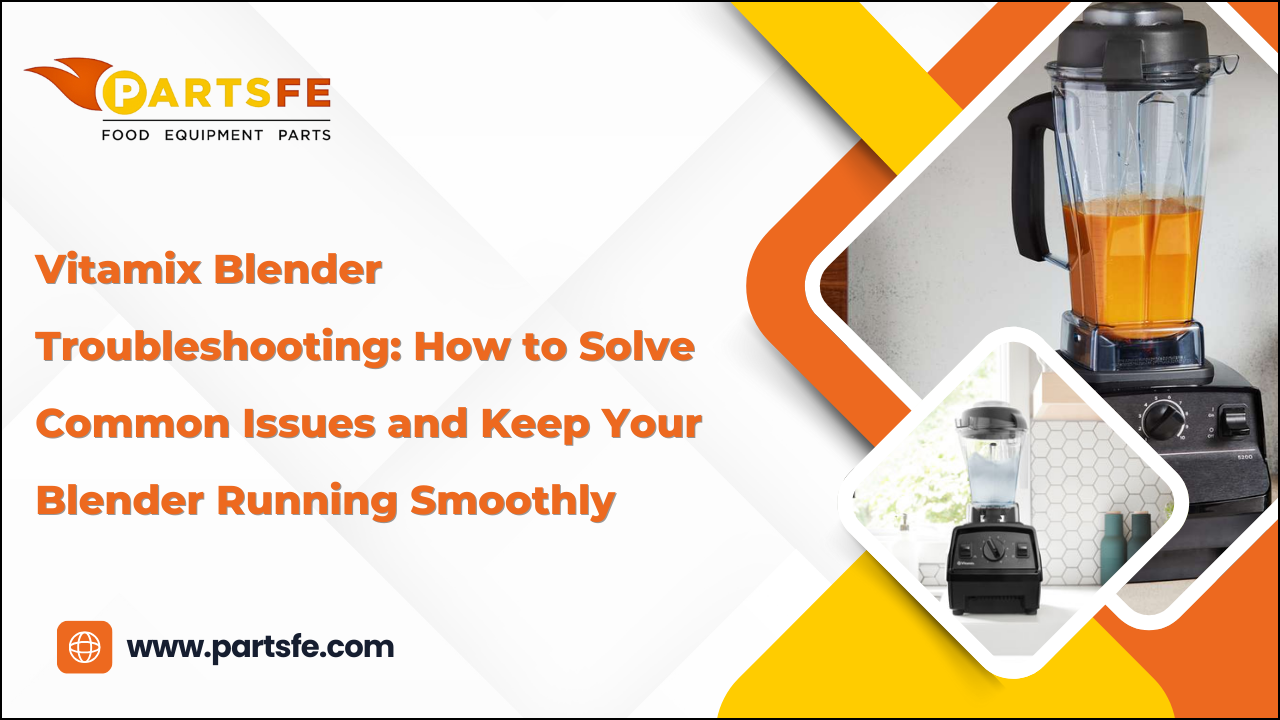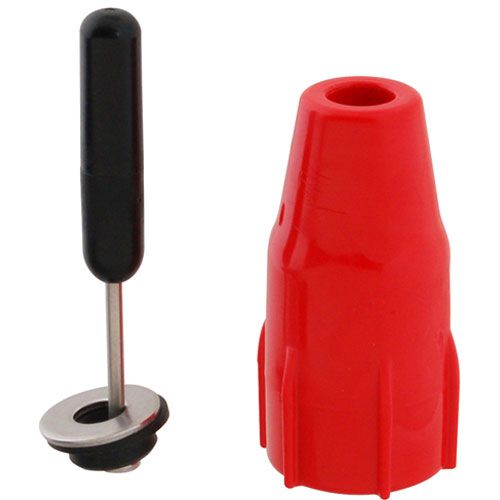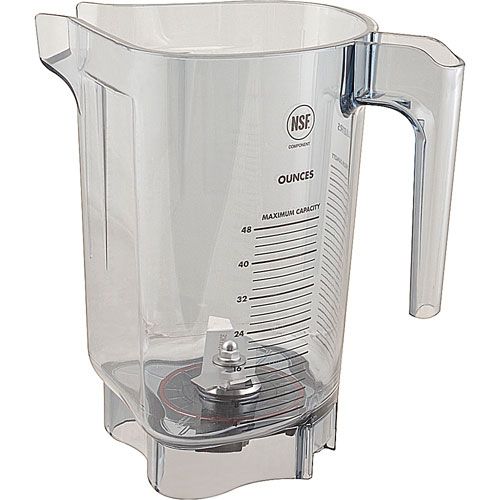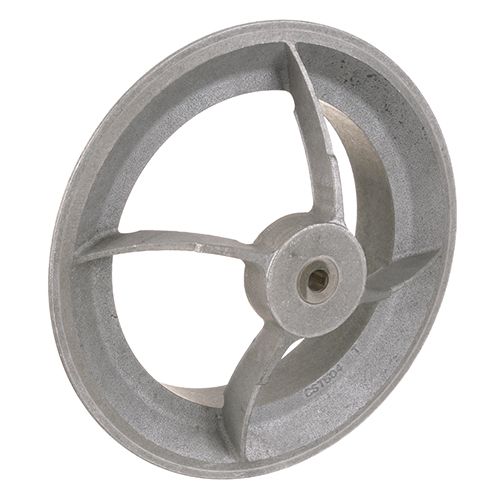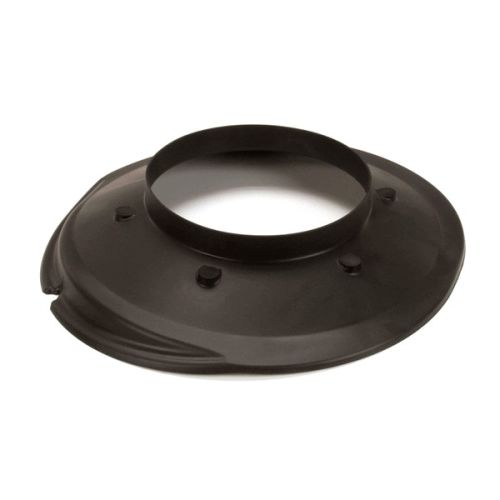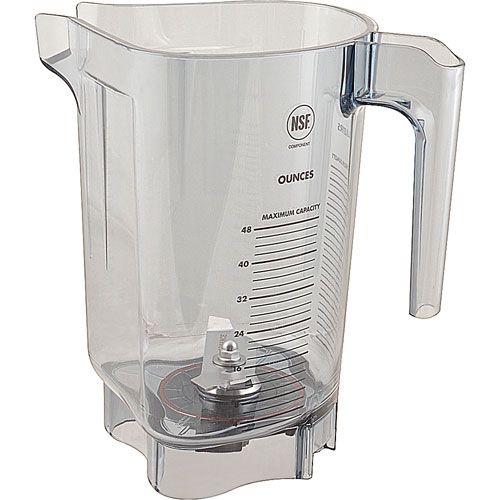Vitamix Blender Troubleshooting: How to Solve Common Issues and Keep Your Blender Running Smoothly
A Vitamix blender is a high-performance kitchen appliance known for its powerful blending capabilities. It's designed for various culinary tasks, including making smoothies, soups, sauces, and even milling grains or kneading dough. They are appreciated for their durability, versatility, and the ability to blend ingredients to a smooth consistency. Best Vitamix blenders are known for their quality and performance, but occasional issues can arise. Common troubleshooting for Vitamix blenders includes addressing motor overheating, blade blockages, or unusual noises. Regular maintenance involves cleaning the container, blender blades, and base, and inspecting for wear and tear of knob and other components. In this blog, we are going to discuss on effective maintenance of the Vitamix blender and ideas and worthwhile ideas for troubleshooting.
| Table of contents: Understanding How Vitamix Blenders Work Common problems and solutions for your Vitamix Blender Tips for proper maintenance and care of your Vitamix Blender |
Understanding How Vitamix Blenders Work
A Vitamix blender isn’t your average kitchen appliance. The high-performance motor, durable stainless-steel blades, and variable speed settings are engineered for tough jobs. But understanding the key components can help with troubleshooting:
-
Motor Base: The powerhouse of your Vitamix. It includes the control panel, power supply, and cooling system.
-
Drive Socket: Connects the motor to the blade base. It’s designed to break before the motor if the blade is jammed.
-
Container and Blades: Vitamix blades don’t require sharpening and are designed to create a vortex for consistent blending.
Understanding these parts helps you pinpoint problems and avoid misdiagnosing simple issues.
Common Problems and Solutions for Your Vitamix Blender
Before delving into maintenance and usage strategies, it's important to understand the typical problems Vitamix users face. Here are the most frequent ones:
1. Blender Won’t Start
If your Vitamix won’t turn on at all, check the following:
-
Power Source: Make sure the blender is plugged in and the outlet works. Try a different outlet.
-
Reset Switch: Some Vitamix models have a thermal protection reset switch. If the motor overheats, let it cool for 20-45 minutes, then press the reset button (if applicable).
-
Container Position: Ensure the container is seated properly on the base. Some models won’t operate unless everything is correctly aligned.
2. Blender Starts but Shuts Off Mid-Use
This usually indicates overheating:
-
Overloaded Container: Don’t fill the jar past its max fill line. Use the tamper to help blend thicker mixtures.
-
Continuous Use: Let the motor cool after blending for extended periods.
-
Thermal Override: The motor has a safety feature to prevent overheating. Wait 30-45 minutes before restarting.
3. Unusual Noises or Vibrations
Odd sounds or vibrations can stem from:
-
Loose Blade Assembly: Check if the blades are secure and not damaged.
-
Worn Bearings: Older containers may develop bearing issues; consider replacing the container.
-
Unbalanced Base: Make sure the blender is on a level surface and nothing is stuck under the base.
4. Leaking from the Bottom of the Container
Leaks are often due to:
-
Damaged Seal or Blade Assembly: The seal might be worn out or the blades may be cracked.
-
Improper Assembly: Ensure the blade base is tightly secured.
5. Blender is Blending Inconsistently or Poorly
If you're not getting that smooth Vitamix consistency:
-
Dull Blades: Blades rarely need sharpening but can wear out over years of use.
-
Low Speeds: Start on low, but ramp up to high to achieve a smooth texture.
-
Improper Load Order: Add liquids first, soft items second, and frozen or hard items last for optimal blending.
6. Burning Smell or Smoke
If you notice a burning smell:
-
Overloaded Motor: This could be from overheating or a jammed blade.
-
Worn Drive Socket: The rubber coupling that connects the base to the container may need replacing.
Read our guide on the commercial kitchen equipment probe.
Tips for Proper Maintenance and Care of Your Vitamix Blender
Proper maintenance and cleaning of a Vitamix commercial blender is essential to ensure its longevity and consistent high performance. Regular cleaning, lubrication, and part replacement as needed prevent wear and tear, ensuring that the blender remains efficient and reliable for years, ultimately protecting your investment.
-
Regular Cleaning: After each use, clean the blender thoroughly. Rinse the container with warm water and a few drops of dish soap. Use the blender's self-cleaning feature if available. This prevents food residue from building up.
-
Dedicated Cleaning: Disassemble the container, removing the blades and seals. Wash these components separately with warm, soapy water. Ensure that the Vitamix container is completely dry before reassembling.
-
Avoid Harsh and Bleak Ingredients: While Vitamix commercial blenders are robust, avoid blending extremely hard items like bones or hard frozen fruits with large pits, as these can potentially damage the blender blades or container and weakening the blender motor.
-
Don't Overfill with stuff: Avoid overloading the container. Blending in smaller batches allows for better circulation and smoother results.
-
Lubricate Seals and gaskets: Periodically, lubricate the seals with a food-grade lubricant to maintain their flexibility and prevent leakage.
-
Use the Right Speed for blending: Start blending at low speeds and gradually increase to higher speeds as needed. This helps maintain the motor's health and prevents overheating.
-
Replace Worn Parts: If you notice wear and tear on the container, seals, or blades, replace these components promptly to maintain optimal performance.
Know about the Different Types Of Motors Used In Commercial Kitchen Appliances
Vitamix immersion blenders offer numerous benefits, known for thexir exceptional blending power, versatility, and ability to handle a wide range of ingredients, from smoothies to soups. Their importance lies in simplifying kitchen tasks and promoting healthier eating habits. Maintaining a Vitamix blender ensures that it continues to operate at its best, extending its lifespan and preserving the quality of the food it prepares, making it an essential kitchen companion for culinary enthusiasts and health-conscious individuals.
It's also about ensuring consistent performance. Proper care involves regular cleaning to prevent residue buildup and deep cleaning to maintain the hygiene and cleanliness of blender components. Lubricating seals, checking for wear and tear, and following manufacturer recommendations are all part of maintaining its excellent functionality. With its high-quality blending capabilities, a well-maintained Vitamix blender becomes an indispensable tool in your kitchen.
FAQs
Do Vitamix blenders need maintenance?
Yes, Vitamix blenders benefit from regular maintenance. Routine cleaning, lubricating seals, and addressing wear and tear on components are essential steps to keep your Vitamix blender operating at its best.
Do you put ice first or last in Vitamix?
It's generally recommended to add liquid or soft ingredients first, followed by ice and then any additional solid ingredients. Starting with liquids or soft ingredients at the bottom helps create a smoother blending process.
Why does my Vitamix smell when I first use it?
The initial smell when using a new Vitamix blender is typically due to residual manufacturing odors from the materials and components used in its construction. These odors are usually harmless and not a cause for concern. To reduce the smell, you can perform a few cleaning cycles with a mixture of warm water and a small amount of dish soap.
Are Vitamix blenders suitable for crushing ice and making frozen desserts?
Yes, Vitamix blenders are exceptionally suitable for crushing ice and making frozen desserts. They are renowned for their powerful blender motors and high-quality blender blades, which can easily crush ice to create finely shaved ice or crushed ice for beverages and cocktails.
Why won't my Vitamix machine start?
If your Vitamix machine won't start, it may be due to several common issues. Ensure it's plugged into a working power outlet, the power switch is in the "on" position, and the container is properly seated and the lid securely closed.
How can I prevent my machine from overheating?
To prevent your machine from overheating, avoid overloading it with ingredients, especially when blending thick mixtures. Start at a lower speed and gradually increase as needed, allowing the blender to work more efficiently and reduce the risk of overheating.

